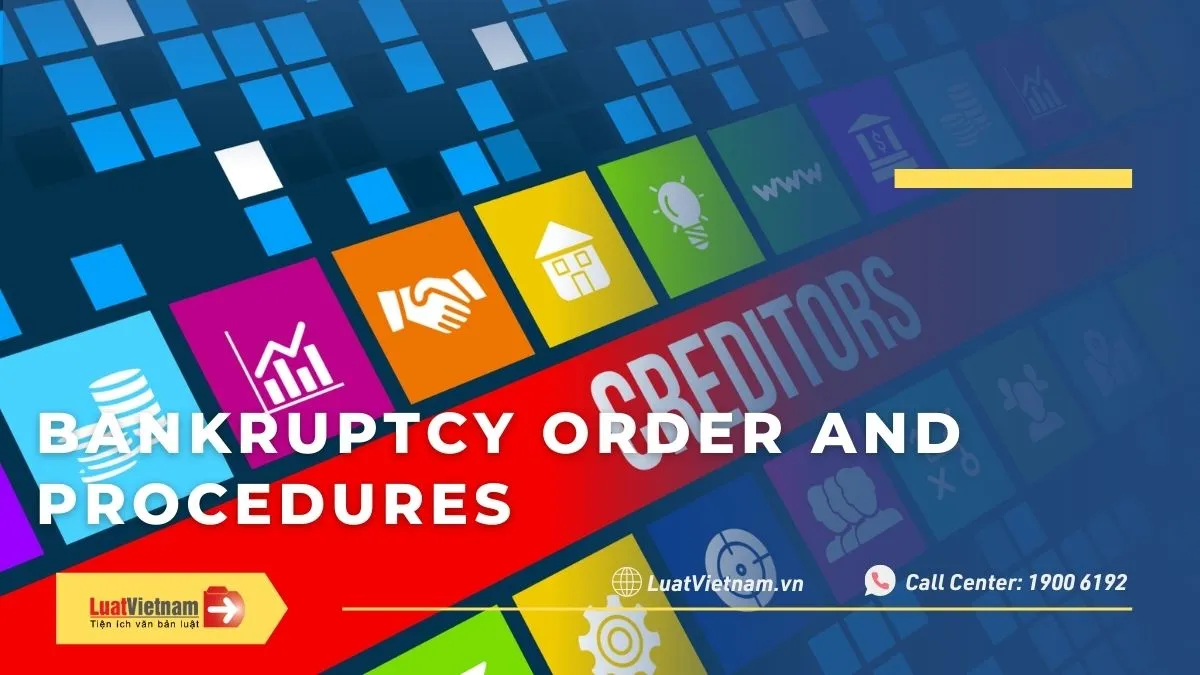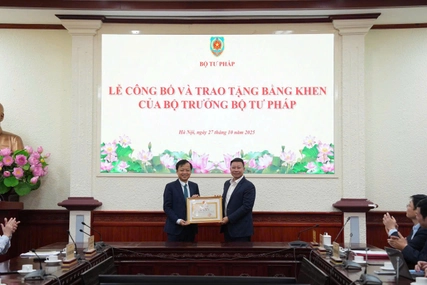Each enterprise’s cycle includes 04 important periods: start-up, growth, saturation, and depression. In the depression period, bankruptcy is the final step to the operation termination of an enterprise. Therefore, what is bankruptcy in accordance with law provisions? When does an enterprise go bankrupt?
1. What is bankruptcy? When does an enterprise go bankrupt?
Clause 2, Article 4 of the Law on Bankruptcy 2014 defines the bankruptcy as follows:
Bankruptcy means the state of insolvency of an enterprise or a cooperative which is declared bankrupt by a people’s court.
Within that, Insolvent enterprise or cooperative means an enterprise or a cooperative that fails to perform the obligation to pay its debts within 3 months after such debts become due (Clause 1, Article 4 of the Law on Bankruptcy).
At the same time, an enterprise cannot make the declaration of bankruptcy by itself, bankruptcy is only declared bankrupt by a people’s court. In particulars, Article 8 of the Law on Bankruptcy prescribes the jurisdiction to settle bankruptcy as follows:
- People’s courts of provinces or centrally-run cities have the jurisdiction to settle bankruptcy of enterprises or of cooperatives that have made business or cooperative registration in such provinces or centrally-run cities and fall into one of the following cases:
+ The case of bankruptcy involves assets located abroad or bankruptcy procedure participants reside abroad;
+ The insolvent enterprise or cooperative has branches and representative offices in different districts, towns and provincial cities;
+ The insolvent enterprise or cooperative has real estate in different districts, towns and provincial cities;
+ The case of bankruptcy falls under the jurisdiction of a people’s court of district, town or provincial city (below referred to as district-level people’s court) but is complex and is picked up by a provincial-level people’s court for settlement.
- District-level people’s courts have the jurisdiction to settle bankruptcy of enterprises and cooperatives headquartered in their districts, towns or provincial cities and not falling into the cases under the jurisdiction of provincial-level people’s courts.
Besides, the Law on Bankruptcy has no regulations on fails to perform the obligation to pay which amount of its debts is consider as being bankrupt because the financial conditions are different among enterprises.
 2. Bankruptcy procedures
2. Bankruptcy procedures
2.1. Persons having the right and obligation to file petitions for initiation of bankruptcy procedures
In accordance with the Article 5 of the Law on Bankruptcy, persons having the right and obligation to file petitions for initiation of bankruptcy procedures are:
- Creditors;
- Employees, grassroots trade unions or immediate higher-level trade unions in enterprises or cooperatives where no grassroots trade union has been established;
- At-law representatives of enterprises or cooperatives
- Owners of private enterprises, chairpersons of boards of directors of joint-stock companies, chairpersons of members’ councils of limited liability companies (LLC) with two or more members, owners of single-member LLCs, or partners of partnerships.
Shareholders or groups of shareholders holding at least 20% of common shares for at least 6 consecutive months. Shareholders or groups of shareholders holding under 20% of common shares for at least 6 consecutive months prescribed in the company charters.
- Cooperative members or at-law representatives of cooperatives being members of unions of cooperatives.
 2.2. Bankruptcy order and procedures
2.2. Bankruptcy order and procedures
Pursuant to the regulations prescribed at the Law on Bankruptcy, the bankruptcy procedures are as follows:
Step | Objectives | Content |
Step 1: Filing petitions for initiation of bankruptcy procedures at the People’s courts | Creditors filing petitions for initiation of bankruptcy procedures
| - File petitions for initiation of bankruptcy procedures at People’ courts - Within 3 working days after people’s courts receive valid petitions may request in writing these people’s courts for negotiation on withdrawal of petitions. People’s courts shall set a time limit for negotiation which must not exceed 20 days after receiving a valid petition for initiation of bankruptcy procedures (Article 37). |
Step 2: Payment of the bankruptcy fee and advance payment of bankruptcy expenses
| People’s courts | estimate bankruptcy expenses to be advanced and notify them to the petitioner for payment of the bankruptcy fee and advance payment of bankruptcy expenses |
Petitioner files petitions for initiation of bankruptcy procedures | In accordance with the Article 38, within 15 days after receiving a notice of payment of the bankruptcy fee and advance payment of bankruptcy expenses, the petitioner for initiation of bankruptcy procedures shall: - Pay the bankruptcy fee to the civil judgment enforcement agency; - Pay in advance bankruptcy expenses into the bank account opened by the people’s court. | |
Step 3: Handling the petitions for initiation of bankruptcy procedures
| People’s courts | - Within 3 working days after accepting a petition, a people’s court shall notify in writing the acceptance of the petition to the petitioner, (Article 40) - Judges shall issue decisions to initiate bankruptcy procedures when enterprises or cooperatives fall insolvent or not (Article 42). |
Enterprise, cooperatives | After decisions on initiation of bankruptcy procedures are issued, enterprises or cooperatives shall still continue their business operation but submit to supervision by judges and asset management officers or asset management and liquidation firms and some prohibited activities prescribed in Article 48. | |
Step 4: Initiate or not to initiate bankruptcy procedures
| People’s courts | - Notification of a decision to initiate or not to initiate bankruptcy procedures is 3 working days after the people’s court issues such a decision (Article 43). - Within 3 working days after issuing a decision to initiate bankruptcy procedures, a judge shall appoint an asset management officer or asset management and liquidation firm (Article 45). |
An asset management officer or asset management and liquidation firm | Make a list of creditors Creditors and the insolvent enterprise or cooperative may request the judge to review the list of creditors within 5 working days after the time limit for posting up the list of creditors expires. (Article 67) | |
A bankruptcy procedure participant | May request review of such decision within 7 working days after receiving a decision to initiate or not to initiate bankruptcy procedures (Article 44). | |
Step 4: Creditor’s meeting
| People’s courts | A judge shall convene a creditors’ meeting within 20 days after the date of completing the asset inventory. A creditors’ meeting shall be postponed if the conditions are not fully met. Based on the results of the creditor’s meeting, the people’s courts may make decisions on: - Terminate the procedures for restoration of the business operation of an insolvent enterprise or cooperative; - The judge in charge of settling the petition for initiation of bankruptcy procedures shall issue a notice of cessation of rights and obligations of the asset liquidation and Decision on termination of business operation restoration procedures when the finishing the business operation restoration plans. - Decisions on declaration of bankruptcy if enterprise, cooperatives fully meet the conditions. The people’s court shall issue a decision declaring the enterprise or cooperative concerned bankrupt within 15 days after receiving a report on the results of the creditors’ meeting, |
Step 5: Declaring the enterprise bankrupt
| People’s courts | Issue the decisions on the declaration of bankruptcy if an enterprise, cooperatives |
Here is the information on What is bankruptcy and bankruptcy procedures in accordance with legal regulations. Please contact LuatVietnam via 1900.6192 for support with any question or problem.










